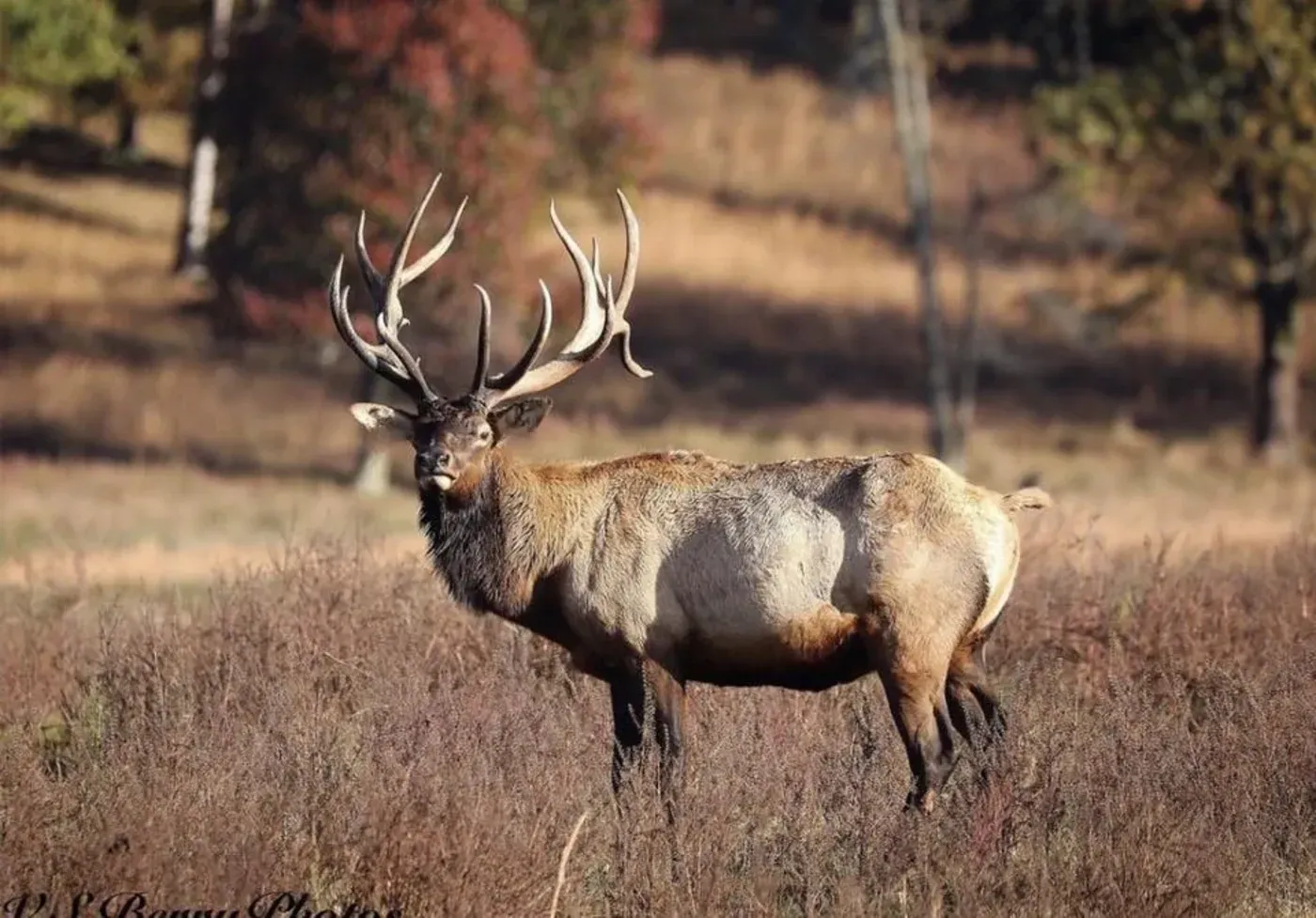Bull Elk
Elk can be distinguished from other deer by their large size, brown or tan bodies, and yellowish-brown tail and rump patch. They have thick necks and slender legs and can stand as tall as 5 feet at the shoulders. Their long legs enable them to run as fast as 35 miles per hour. Males weigh from 600 to 1,100 pounds and have six-tined antlers that can grow up to 5 feet long. Antlers begin growing in early spring and fall off in winter. The females are smaller, about 450 to 650 pounds, and lack antlers. Mating season is in August or September. Females give birth to one or two calves each spring, and newborn calves weigh up to 40 pounds.
Elk can live in many different environments. When able to move freely, elk like mountain areas in summer and lower wooded dense forests in the winter
Woods and grasslands abound with various types of elk food, including leaves, sedges, shrubs, mushrooms, and lichens. In addition to eating leaves and bark from trees, elk use seedlings to mark their territory. Males strip off bark with their antlers, and females pull off bark with their teeth. Then both males and females rub the seedlings with chins and muzzles to cover the plants with scent.

All Species
List of Services
-
Wild Russian Boar
Wild Russian Boar
-
Razorback Boar
Razorback Boar
-
Fallow Deer
Fallow Deer
-
Axis Deer
Axis Deer
-
Black Buck Antelope
Black Buck Antelope
-
Sika Deer
Sika Deer
-
Texas Dall Ram
Texas Dall Ram
-
Merino Ram
Merino Ram
-
Black Hawaiian Ram
Black Hawaiian Ram
-
Corsican Ram
Corsican Ram
-
Mouflon Ram
Mouflon Ram
-
Spanish & Catalina Goats
Spanish & Catalina Goats
-
Aoudad
Aoudad
-
Bull Elk
Bull Elk
-
Red “Stag” Deer
Red “Stag” Deer
-
Buffalo
Buffalo
-
Water Buffalo
Water Buffalo
-
Watusi
Watusi

